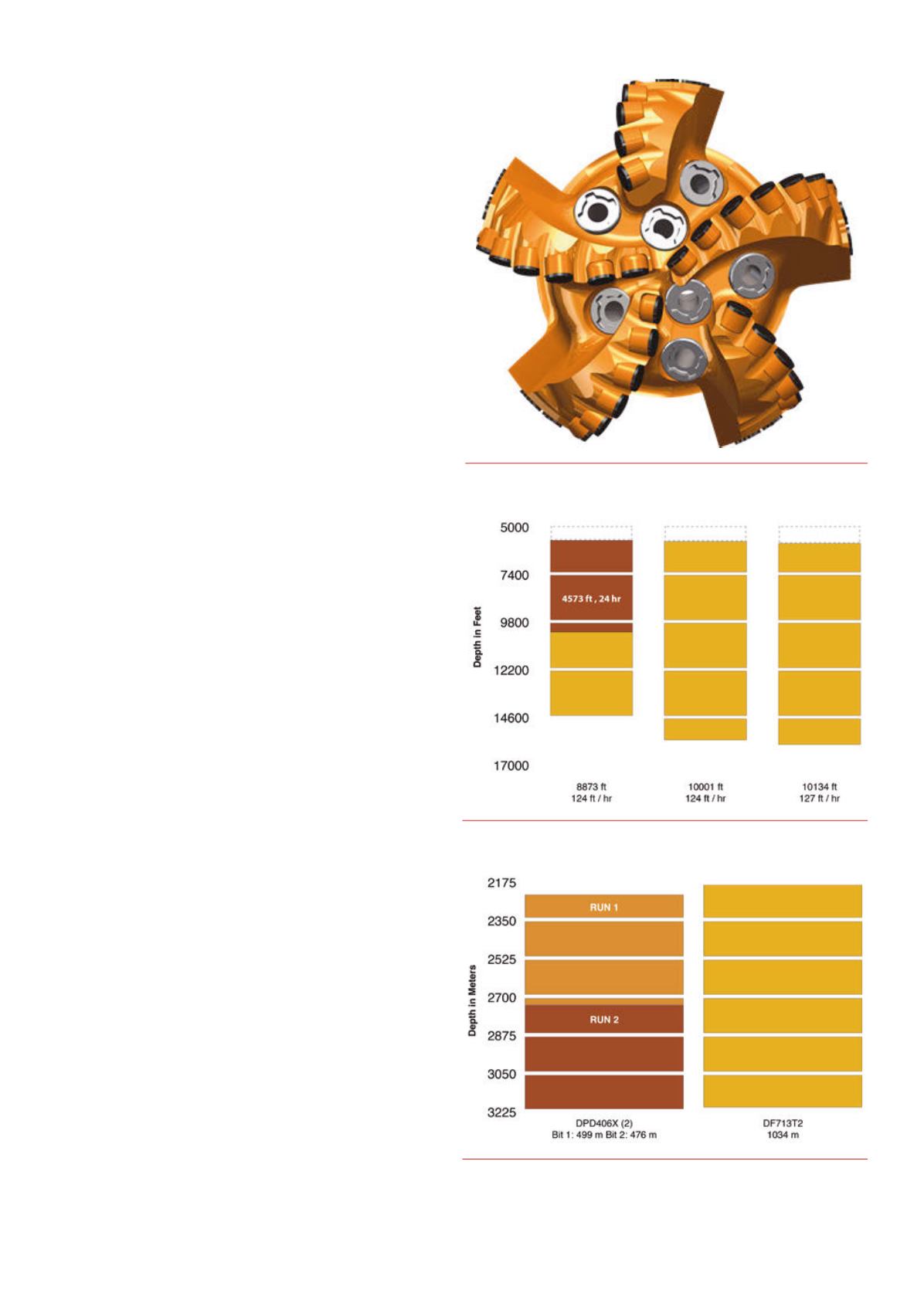
June
2015
Oilfield Technology
|
49
TheUticaShale
In the Utica Shale of Ohio, build rates are often elusive and
laterals typically extend 8000 ft or longer. The newest member
of the DF516T family of curve and lateral bits is providing
one operator enhanced curve and lateral performance on its
initial runs. Plagued with inconsistent curve performance,
the operator has been forced to pull out of the hole partway
through the curve to pick up a higher bend motor, which also
necessitates another trip once the curve is landed to dial
back down for the lateral. Planning for one BHA and requiring
three quickly adds up to cost over‑runs. On its first two runs
in Harrison County Ohio, the 8.5 DF516TV5 has completed
the curve at a high rate of speed and TD’d the lateral. When
compared to an offset well using another bit, the DF516T saved
two trips. Eliminating these trips resulted in cost savings of
US$100 000 (cost estimate based on trip rate of 1000 ft/hr and
assumes operator spread rate of US$60 000/d).
Making it throughtheMarcellus
The Marcellus Shale is the most prolific gas producer among
unconventional plays. Characterised by higher mud weights,
wildly varying dip angles, and deposited above a very hard
lime that is embedded with chert, the lateral interval can
be treacherous and challenging. In addition to the hazards
and geological challenges, a drill bit must be capable of
tracking extremely well to maximise the time operators
spend rotating when they do not have to adjust for target
changes. One operator in the Pennsylvania Marcellus is
steadily knocking down very long laterals with the 8.75 DF516T.
Drilling 10 000 ft and more and ‘coming out green’ is standard
for the DF516T. The operator recently recorded their best day in
the lateral with 4573 ft in one 24 hr period.
TheCanadianfoothills
In the Canadian Foothills of Western Alberta, operators drill
challenging horizontal wells through different target formations.
The rich oil and gas fields in the Foothills challenge operators
with hard and abrasive formations that damage and slow
down lateral bits, often forcing multiple trips to replace the
bit. During the 2015 Canadian drilling campaign Drilformance
analysed dulls of the previous generation DF713T2, made
adjustments to the cutting structure, and now offers operators
a bit that has shown significantly increased durability. This
has been demonstrated across multiple fields in the Foothills
area including the Valhalla, Pouce Coupe, and Sundown fields.
Highlights include drilling at an average 47% faster ROP, 46%
further, on average, 205 m more per run than other bits. The
DF713T2 utilises an efficient and durability‑biased cutting
structure and is built using extremely abrasion resistant
thermally stable diamond PDC cutters. These cutters utilise
a multi‑modal small grain size diamond feed and undergo a
multi‑step HPHT process. The technology has improved on
former impact weaknesses at a satisfying pace. The performance
of the DF713T2 equipped with TSPs has resulted in the
completion of exceptionally long runs.
Settingthepace inOman
Improved efficiency is a universal desire for any business.
While the Middle East is renowned for rich energy resources
that remain economical despite decreased commodity prices,
the oil companies of the region set aggressive goals for
performance improvement. Over time, technically demanding
Figure 6.
In theDoig formation in the Valhalla field, same operator same rig,
DF713T2 completed interval in one run versus a competitor’s two runs, saved
an estimated 18 hr trip, andaveraged 47%faster ROP.
Figure 5.
The 8.75DF516T drills threeMarcellus curve/laterals ina rowat
over 120 ft/hr. Two of the runswere >10 000 ft.
Figure 4.
The 8.5DF516T consistently drills 8000+ ft curve and lateral
intervals in Appalachian Shale plays.


